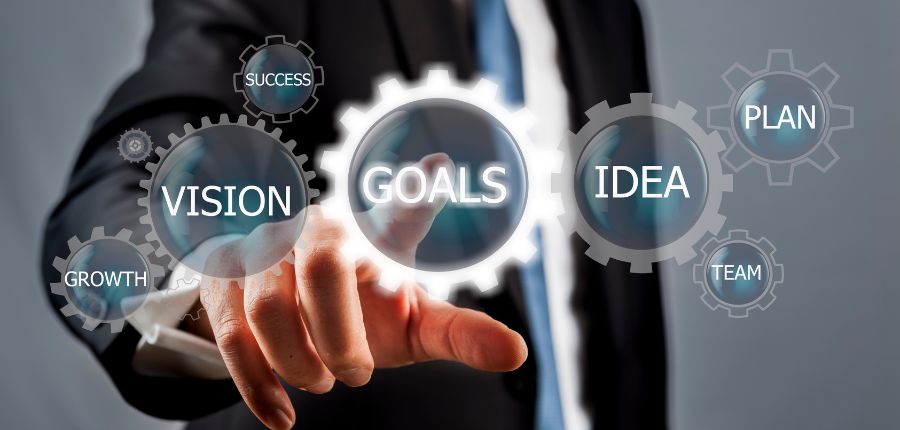In the realm of business, leadership development stands as a cornerstone for organizational growth and sustainability. According to a survey conducted by Gartner, Inc., the top priority for HR leaders in 2023 is the effectiveness of leaders and managers. This priority was cited by 60% of respondents in the survey. Leaders are not born; they are made through continuous learning, experience, and intentional development. While some individuals may possess innate qualities that predispose them to leadership development roles, true leadership is cultivated through a combination of continuous learning, hands-on experience, and intentional development efforts.
Table of Contents
- Introduction to Leadership Development Goals and Milestones
- Challenges in Leadership Development
- Why Setting Leadership Development Goals is Crucial
- Steps to Setting Leadership Development Goals and Milestones
- Creating Leadership Development Plans and Programs
- Setting Clear Milestones and Timelines
- Fostering a Culture of Continuous Learning
- Evaluating and Adjusting Leadership Development Strategies
- The Role of Coaching in Leadership Development
- Benefits of Coaching for Leadership Development
- Conclusion
A significant problem, however, often encountered in leadership development is the lack of alignment between organizational goals and individual development plans. Organizations may struggle to identify and prioritize the specific leadership competencies needed to achieve strategic objectives. This disconnect can result in leaders focusing on skills that are not aligned with organizational priorities. It can, thus, lead to inefficiencies and missed opportunities for growth.
Another challenge may arise from the rapid pace of change in today’s business landscape. Leaders must navigate complex and unpredictable environments, requiring them to adapt quickly and develop new skills continuously. This constant need for adaptation and learning can be overwhelming for leaders who may feel pressure to perform without adequate support or resources.
Traditional leadership development approaches, moreover, may not always be effective in addressing the diverse needs and backgrounds of leaders. One-size-fits-all training/coaching programs may not cater to individual learning styles or cultural differences, limiting the effectiveness of development efforts.
Despite these challenges, organizations can overcome them by implementing tailored leadership development strategies that align with their unique goals. They can provide ongoing support and feedback, and foster a culture of continuous learning and development. By addressing these challenges head-on, organizations can cultivate a strong pipeline of adaptable and effective leaders who can drive success in a rapidly changing business environment.

Introduction to Leadership Development Goals and Milestones
Clear settings of goals and milestones are essential for nurturing future leaders because they provide a roadmap for development and growth. When leaders have well-defined goals and milestones, they can focus their efforts, prioritize tasks, and track progress effectively. This clarity also fosters accountability, as leaders are aware of what is expected of them and can take ownership of their responsibilities. Moreover, setting specific goals and milestones encourages leaders to strive for excellence, continuously improve, and adapt to challenges, thereby enhancing their leadership skills and potential for success.
-
Define Leadership Development Objectives
- Identify Leadership Competencies: Determine the key competencies and skills required for leadership roles in your organization. This could include communication skills, strategic thinking, decision-making, emotional intelligence, and adaptability.
- Understand Organizational Needs: Align leadership development goals with the strategic objectives and culture of your organization. Consider factors such as industry trends, market demands, and organizational values.
-
Assess Current Leadership Capabilities
- Conduct Leadership Assessments: Use tools like 360-degree feedback, leadership assessments, and performance evaluations to assess current leadership strengths and areas for improvement.
- Identify Leadership Gaps: Analyze the gap between current and desired leadership capabilities. This gap analysis will guide the development of targeted goals and milestones.
-
Set Specific and Measurable Goals
- SMART Goals: Ensure that leadership development goals are Specific, Measurable, Achievable, Relevant, and Time-bound. For example, “Increase team engagement scores by 15% within six months through improved communication and mentoring.”
- Quantifiable Metrics: Define measurable metrics to track progress and success. This could include employee satisfaction surveys, leadership performance evaluations, and business impact assessments.
-
Create Development Plans and Programs
-
- Individual Development Plans: Collaborate with leaders to create personalized development plans based on their strengths, areas for improvement, and career aspirations.
- Leadership Development Programs: Offer a range of leadership training, workshops, coaching sessions, and mentorship programs to support skill development and knowledge enhancement.
- Blend Learning Approaches: Utilize a blend of online learning platforms, classroom training, experiential learning, and on-the-job experiences to cater to diverse learning styles and preferences.
-
Establish Clear Milestones and Timelines
-
- Short-term and Long-term Milestones: Break down larger goals into smaller, manageable milestones with clear timelines. This allows for incremental progress and continuous feedback.
- Regular Check-ins: Schedule regular check-ins and progress reviews to track development, provide support, and make adjustments as needed.
-
Promote a Culture of Continuous Learning
-
- Promote Learning Opportunities: Encourage leaders to participate in industry conferences, seminars, webinars, and networking events to stay updated with best practices and trends.
- Feedback and Reflection: Emphasize the importance of feedback, self-reflection, and learning from failures as valuable learning experiences.
- Recognition and Rewards: Recognize and reward leaders who demonstrate exceptional growth, achievement of goals, and contributions to the organization’s success.
-
Evaluate and Adjust Strategies
-
- Measure Impact: Use quantitative and qualitative data to evaluate the impact of leadership development efforts on business outcomes, employee engagement, and organizational culture.
- Feedback Loop: Gather feedback from participants, stakeholders, and mentors to assess the effectiveness of leadership development strategies and make necessary adjustments.
- Iterative Improvement: Continuously refine and improve leadership development programs based on insights, lessons learned, and evolving business needs.
By following this checklist and focusing on leadership development goals, milestones, and continuous improvement, organizations can cultivate a pipeline of skilled and visionary leaders who are equipped to navigate challenges, inspire teams, and drive sustainable growth.
Coaching and Leadership Development
Coaching in leadership development is a collaborative process that focuses on enhancing the skills, capabilities, and effectiveness of leaders. It involves a skilled coach working closely with an individual leader to identify strengths, address development areas, set goals, provide feedback, and offer support throughout the leader’s journey. This personalized approach fosters self-awareness, builds confidence, and promotes continuous learning and growth. Coaching plays a vital role in developing key leadership competencies such as communication, emotional intelligence, strategic thinking, and decision-making. I also helps in aligning leadership development efforts with organizational goals and driving individual and collective success.
The Role of Coaching in Leadership Development
Coaching plays a pivotal role in supporting individuals on their leadership development journey. A 2022 study from Harvard Business Review Analytics Services, surveying 665 organizational leaders, revealed that 60% found coaching effective in achieving their goals, compared to 35% for training alone.
How coaching can help you achieve your leadership development goals:
-
Personalized Guidance and Support:
Imagine having a dedicated guide who understands your unique strengths, weaknesses, and development areas. A skilled coach provides personalized guidance tailored to your needs, helping you navigate challenges and seize opportunities effectively.
-
Accountability and Goal Setting:
Picture setting clear and actionable goals aligned with your leadership development objectives. With coaching, you benefit from regular check-ins and accountability mechanisms that keep you motivated and focused on achieving your leadership goals.
-
Enhanced Self-Awareness:
Reflect on the power of self-discovery and enhanced self-awareness. Through coaching, you gain deeper insights into your values, beliefs, motivations, and leadership style, empowering you to make informed decisions and build stronger relationships.
-
Skill Development and Feedback:
Envision honing essential leadership skills such as communication, emotional intelligence, and strategic thinking. Coaches provide targeted feedback, role-playing exercises, and real-life scenarios to help you practice and refine these critical skills.
-
Confidence Building:
Consider the impact of boosting your confidence and resilience as a leader. Coaching addresses limiting beliefs, imposter syndrome, and self-doubt, allowing you to step into leadership roles with authenticity, conviction, and confidence.
-
Navigating Challenges and Transitions:
Think about navigating complex challenges, transitions, and career milestones with support and guidance. Coaches offer strategies, tools, and perspectives to help you excel in various leadership situations, from leading through change to managing teams effectively.
-
Continuous Learning and Growth:
Envision a culture of continuous learning and growth fostered by coaching. Coaches encourage reflective practices, facilitate learning from experiences, and provide resources to expand your leadership knowledge and capabilities continually.
By incorporating coaching into your leadership development plan, you embark on a transformative journey of growth, learning, and achievement. Take the first step towards unlocking your full leadership potential and learn more about the benefits of Leadership Coaching to help you make a lasting impact in your organization.
Conclusion of Leadership Development
Setting clear leadership development goals and milestones is pivotal in preparing future leaders for success. It is crucial to create a supportive environment that encourages continuous learning, adaptability, and resilience. Additionally, fostering a culture of innovation and inclusivity can further enhance leadership development initiatives. Incorporating feedback mechanisms and regular assessments helps in refining strategies and ensuring alignment with evolving organizational needs. By nurturing these qualities alongside structured goal-setting and coaching, organizations can cultivate a robust leadership pipeline capable of driving positive change and achieving long-term success.















